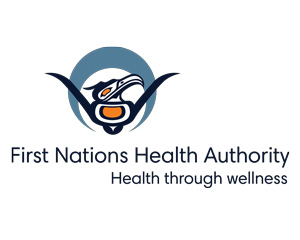
Left to right: Dustin Richard, Rebecca Tallman, Matt Petrie and Kim Williams
A young driver is involved in a horrific car crash in a remote region of the province during the middle of the night. Suffering from traumatic life-threatening injuries, the driver is taken to the nearest medical facility to be stabilized until a medevac to a hospital is available.
At the remote location is a new doctor who has only been at the station for six months. While the doctor is the only one physically with the patient, they are not alone. Real-Time Virtual Support (RTVS) Peer Pathways are there to help. RTVS connects the rookie doctor to a dedicated peer physician who provides advice and support via phone or video call.
The patient is stabilized and is able to be transported for more advanced care, saving their life. Just as important as saving the patient's life is that the lone doctor was able to access critical support to do their work. That incident may have left an unsupported and less experienced doctor so traumatized that they would leave their remote posting as soon as they could.
This true story was recounted during a presentation at the First Nations Health & Wellness Summit and serves as an example of the need for RTVS. As a demonstration of the maturity of the communications technology, three of the four presenters were presenting virtually.
Kim Williams, Network Director at the Rural Coordination Centre of BC said RTVS is important because it means “rural providers are not alone and that they feel supported and it contributes to the recruitment and retention, especially of new providers." The service also fills certain service gaps, allowing some patients to remain in community.
“Patients can receive good virtual care from emergency physicians, pediatricians and maternity providers," said Kim. “The RTVS service will help their local health care provider administer the care they need to either stay in community or is assisted to the safest place for advanced care."
RTVS provides health care providers in remote and rural regions with dedicated 24/7 support service via Zoom and is based on separate pathways. Described as a “family," RUDi (Rural Urgent Doctor in-aid) provides emergency medicine support, MaBAL (Maternity and Babies Advice Line) is for maternity and newborn support, and CHARLiE (Child Health Advice in Real-Time Electronically) offers pediatric support.
The need for RTVS is clear – the majority of calls to the service is from northern BC, with many of them coming from First Nations communities. These video calls allow health care providers to access expertise taken for granted in larger urban centres. Since it uses video, the advising person can also see the patient and provide guidance based on their own observations. But more than just medical expertise, RTVS also gives moral support. On the video screen there is a friendly and supportive face instead of a detached voice.
Currently, 136 First Nations and non-First Nations communities use RTVS, with 10,800 hours of virtual support provided since April 2021. Health care providers can connect with RTVS via Zoom, over the phone or by the FNHA Telehealth Cart. More information can be found here.
The First Nations Health & Wellness Summit was a three-day event from April 4-6 to share knowledge and wisdom on community driven practices for wholistic wellness.

